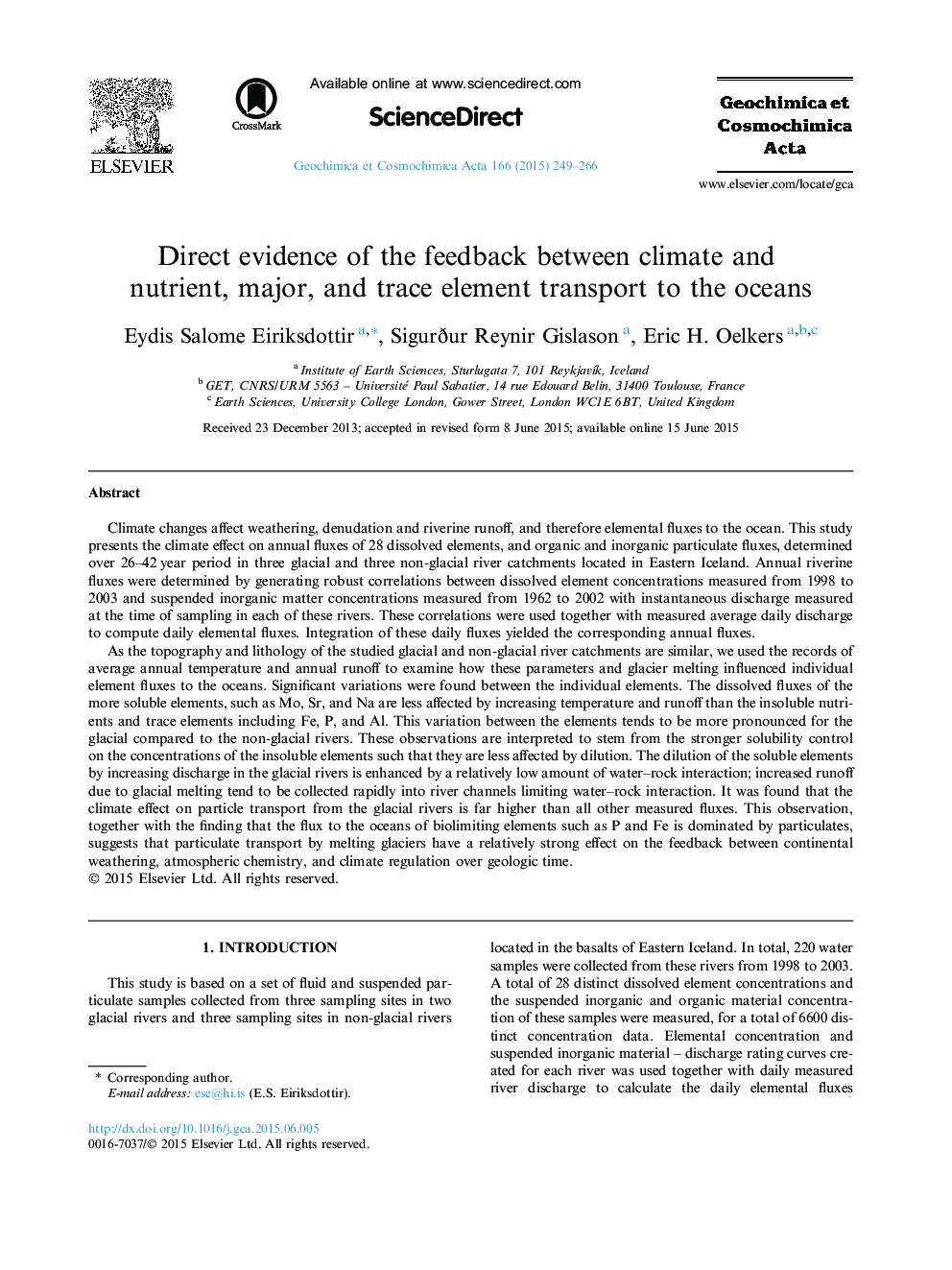| Article ID | Journal | Published Year | Pages | File Type |
|---|---|---|---|---|
| 6437814 | Geochimica et Cosmochimica Acta | 2015 | 18 Pages |
Abstract
As the topography and lithology of the studied glacial and non-glacial river catchments are similar, we used the records of average annual temperature and annual runoff to examine how these parameters and glacier melting influenced individual element fluxes to the oceans. Significant variations were found between the individual elements. The dissolved fluxes of the more soluble elements, such as Mo, Sr, and Na are less affected by increasing temperature and runoff than the insoluble nutrients and trace elements including Fe, P, and Al. This variation between the elements tends to be more pronounced for the glacial compared to the non-glacial rivers. These observations are interpreted to stem from the stronger solubility control on the concentrations of the insoluble elements such that they are less affected by dilution. The dilution of the soluble elements by increasing discharge in the glacial rivers is enhanced by a relatively low amount of water-rock interaction; increased runoff due to glacial melting tend to be collected rapidly into river channels limiting water-rock interaction. It was found that the climate effect on particle transport from the glacial rivers is far higher than all other measured fluxes. This observation, together with the finding that the flux to the oceans of biolimiting elements such as P and Fe is dominated by particulates, suggests that particulate transport by melting glaciers have a relatively strong effect on the feedback between continental weathering, atmospheric chemistry, and climate regulation over geologic time.
Related Topics
Physical Sciences and Engineering
Earth and Planetary Sciences
Geochemistry and Petrology
Authors
Eydis Salome Eiriksdottir, Sigurður Reynir Gislason, Eric H. Oelkers,
